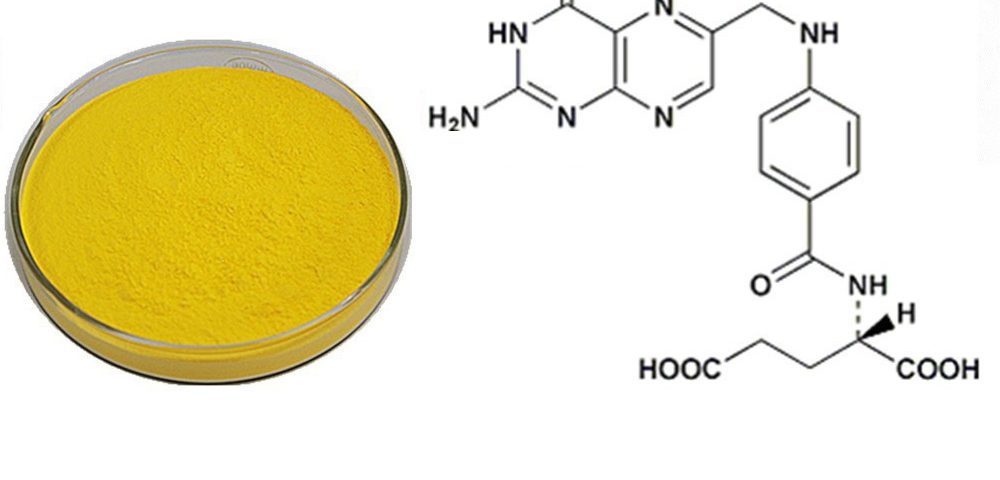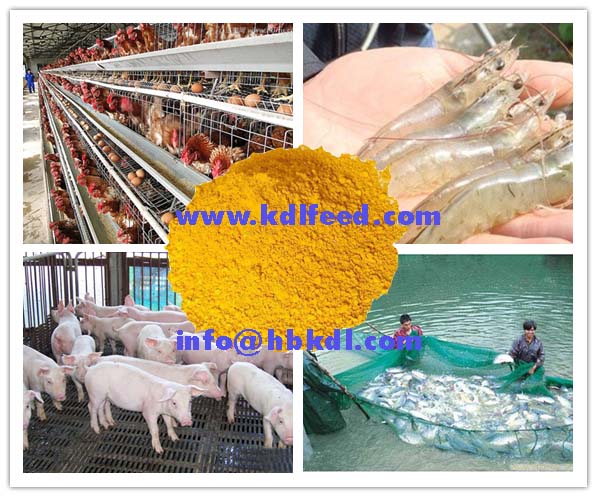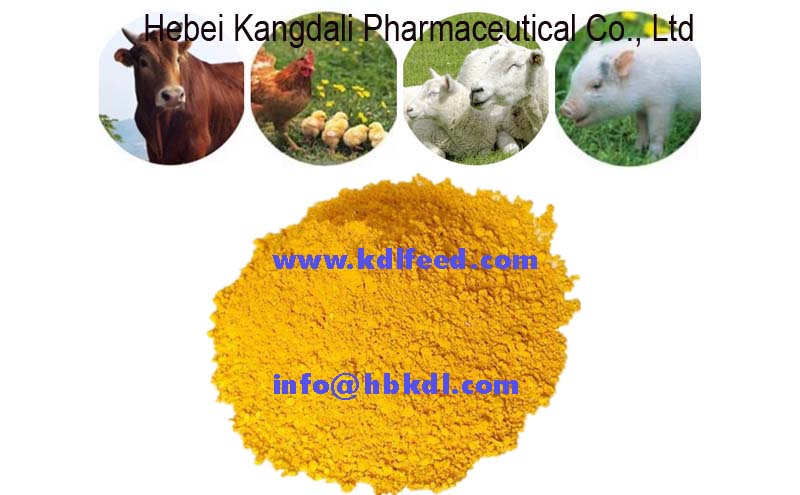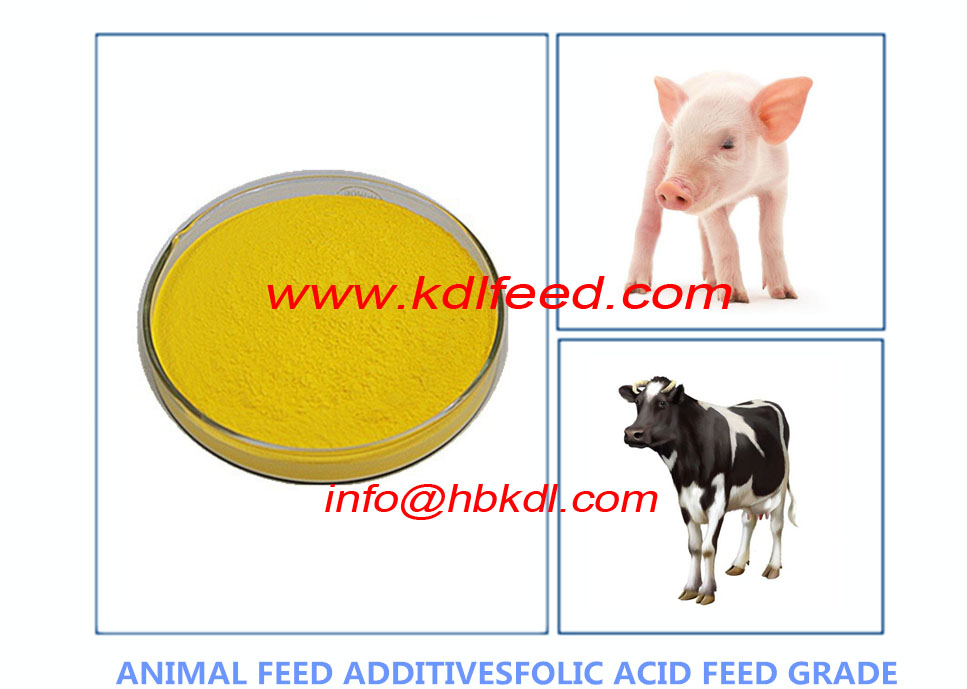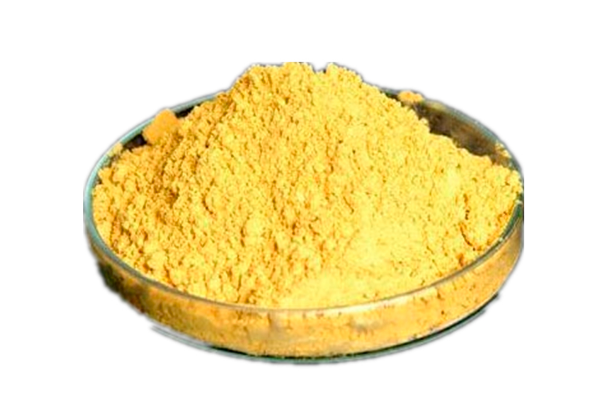vitamin folic acid,poultry feed addictive

Granule Corn Gluten Meal, is one Powdery Corn Gluten Meal Animal Feed
September 29, 2017
Choline Chloride B-vitamins, poultry feed additive
October 7, 2017Kandali is a professional manufacturer of vitamin folic acid , main products are folic acid powder, folic acid feed grade, folic acid food grade, folic acid pharma grade etc… Folic acid (also knows as vitamin B9 ) is part of Vitamin B complex. Our folic acid is widly used in many area, such as the folic acid feed grade can be used as additives of animal feed, and the folic acid food grade can be used as food additives, folic acid pharma grade is one of the important raw materials of drugs etc. Our folic acid products are in powder form, have passed many certifications, test reports can be download from our folic acid website. We have large quantity of folic acid in stock. Welcome to contact us for cooperation. We have large number of clients of folic acid all over the world with stable cooperation relationship. Our folic acid products get the client’s praise and recognition. You can ask for folic acid samples any time now.
Folic acid is indispensable in the transfer of single-carbon units in various reactions, a role analogous to that of pantothenic acid in the transfer of two-carbon units (Bailey and Gregory, 2006). The one-carbon units can be formyl, methylene or methyl groups. Some biosynthetic relationships of one-carbon units are shown in Figure 12-1. The major in vivo pathway providing methyl groups involves transfer of a one-carbon unit from serine to tetrahydrofolate to form 5,10-methylenetetrahydrofolate, which is subsequently reduced to 5-methyltetrahydrofolate. Methyltetrahydrofolate then supplies methyl groups to remethylate homocysteine in the activated methyl cycle, providing methionine for synthesis of the important methyl donor agent S-adenosylmethionine (Krumdieck, 1990; Jacob et al., 1994). Some biosynthetic relationships of one-carbon units are generated primarily during amino acid metabolism and are used in the metabolic interconversions of amino acids. They are also used in the biosynthesis of the purine and pyrimidine components of nucleic acids, which are needed for cell division. The important physiological function of THF consists of binding the single-carbon (C1) units to the vitamin molecule, thus transforming them to “active formic acid” or “active formaldehyde.” These are interconvertible by reduction or oxidation and transferable to appropriate acceptors. Folic acid polyglutamates work at least as well as or better than the corresponding monoglutamate forms in every enzyme system examined (Wagner, 1995). It is now accepted that the pteroylpolyglutamates are the acceptors and donors of one-carbon units in amino acid and nucleotide metabolism, while the monoglutamate is merely a transport form.
Folic acid bioavailability in a variety of foods was found to generally exceed 70% (Clifford et al., 1990). Bioavailability of monoglutamate folic acid is substantially greater than polyglutamyl forms (Gregory et al., 1991a; Clifford et al., 1990). The availability of folic acid may range from 30% to 80% in the monoglutamate form. Bioavailability of orally administered 5-methyl folic and 5-formyl folic acid were found to be equal with folic acid for rats (Bhandari and Gregory, 1992).
Deficiency of vitamin folic acid
Poultry are more susceptible to lack of folic acid than other farm livestock, as a deficiency can readily be produced by feeding a folic acid-deficient diet. Folic acid deficiency, as indicated by retarded growth and feed efficiency, could be produced in 15-day-old chicks fed corn-soybean meal diets (Pesti et al., 1991). In folic acid deficiency, megaloblastic arrest of erythrocyte formation in bone marrow causes severe macrocytic anemia as one of the first signs. Folic acid deficiency in chicks is also characterized by poor growth, very poor feathering, an anemic appearance, and perosis (Illus. 12-3 and 12-4). The chicks become lethargic, and feed intake declines. As anemia develops, the comb becomes waxy white and the mucous membrane of the mouth becomes pale (Siddons, 1978). Turkey poults fed a folic acid-deficient diet show reduced growth rate and increased mortality (Illus. 12-5). The birds develop a spastic type of cervical paralysis in which the neck is stiff and extended but with only a moderate degree of anemia. Poults with cervical paralysis die within 2 days after the onset of these signs unless folic acid is administered immediately (Scott et al., 1982). Erythrocytes of deficient birds tend to be large in diameter, and their nuclei are less dense than those of birds receiving supplementary folic acid (Schweigert et al., 1948).
Folic acid deficiency also results in poor feather development for chicks and turkeys, with the shafts weak and brittle. Folic acid, lysine, and iron are required for feather pigmentation, as depigmentation occurs in colored feathers during a deficiency of the vitamin. It appears that egg production is less affected by folic acid deficiency than the development of the chick or poult. Egg and poult weights were significantly increased when turkey hens received higher dietary folic acid and when eggs were injected with folic acid (Robel, 1993b). Inadequate folic acid provided to the hen impairs the oviduct’s response to estrogen and ability to form albumen (NRC, 1994). An inadequate intake of folic acid by breeding hens results in poor hatchability and a marked increase in embryonic mortality (Illus. 12-6), which occurs during the last days of incubation. A deformed beak and bending of the tibiotarsus are signs of the embryonic deficiency. Chicks that successfully emerge are stunted and have feathers that are poorly developed and abnormally pigmented (NRC, 1994).
Specification of Folic Acid vitamins(CAS: 59-30-3)
| Item | Specifications | Results |
| Appearance | Yellow or orange crystalline powder | A yellow crystalline powder |
| Identification | Ration:A256/A365:2.80~3.00 | 2.86 |
| Water | Not more than 8.5% | 7.6% |
| Residue on ignition | Not more than 0.3% | 0.19% |
| Organic volatile impurities | In the last steps of the synthesis water is used as solvent ,so we could not detected organic solvent residue in our products. | |
| Assay(anhydrous basis) | 95.0%~102.0% | 97.5% |
| Conclusion | The results conforms with USP23 standards | |


